Autopilot: Trigger - Page Visited
This trigger adds a contact to a Journeythey visit an eligible page (i.e. a page that meets your criteria):
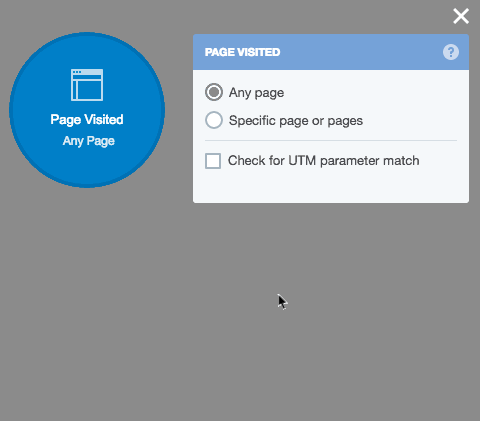
How does Autopilot determine whether a contact has visited a page?
Autopilot tracks page visits in two ways:
1. Visits to pages with the tracking code
Once you've added the tracking code to your web pages, all visits by known and anonymous visitors will be recorded. Once an anonymous visitor becomes a known contact, their previously anonymous visits will be associated with their contact record.
2. Visits to pages via email links
When a contact clicks through to a web page from an email link it is counted as a page visit. There's no need to have the tracking code on a page for this to work.
This means you that can also use this trigger with third party websites (e.g. Facebook) on which you can't place your tracking code. Note, however, that while visits to such pages (i.e. those without the tracking code) via email links will count as page visits for the purposes of this trigger, they will only be displayed in the Activity Feed as an email click.
When will this trigger fire?
For known contacts it will fire (i.e. add the contact to the Journey) immediately every time they visit an eligible page.
For anonymous visitors it will fire when they become a known contact for any visit to an eligible page that occurred in the last 24 hours. The goal of the time window is to ensure that the trigger does not fire based on visits that are no longer timely.
What if I only want an action to be taken the first time a contact visits a page?
This trigger fires every time a contact visits an eligible page. Please take this into account when creating a Journey that includes this trigger.
In some situations you may wish to only take an action the first time a contact visits an eligible page. In situations like these you should use the Smart Segment Trigger:
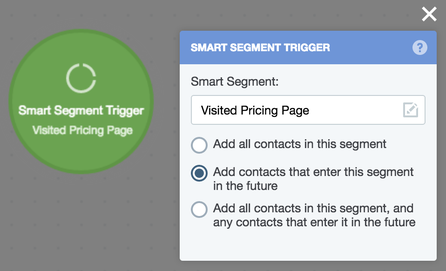
What are UTM parameters?
A UTM parameter can be attached to a URL to send additional information about a marketing campaign. The "Check for UTM parameter match" option allows you to refine who will enter a Journey via this trigger based on UTM parameters:
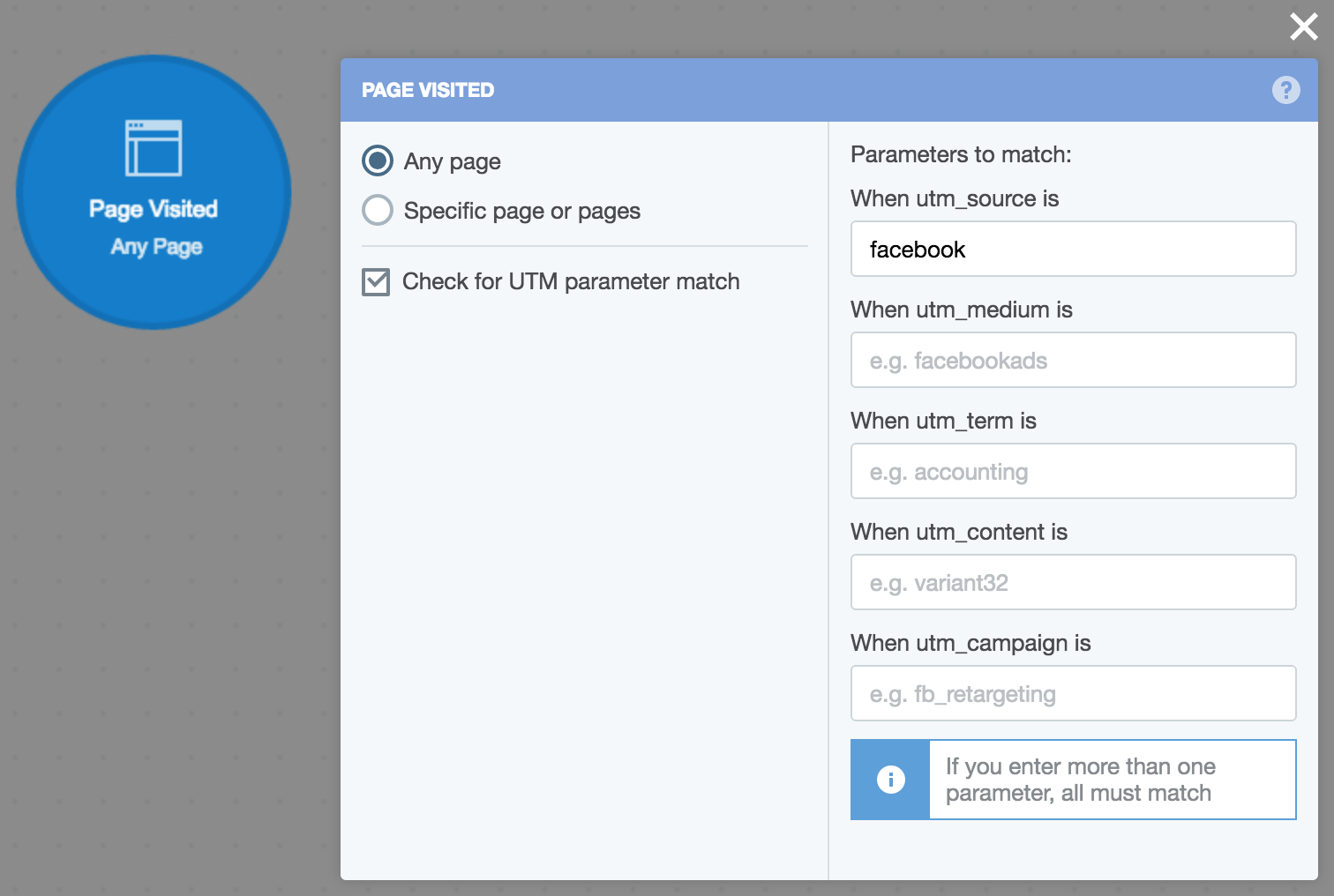
Note that if you enter more than one,of them need to match for the contact to meet the trigger's criteria. Learn more about using UTM parameters with Autopilot to track marketing campaigns here.
Example use cases
Change a score for every visit to an eligible page
Configure the trigger as required and connect it to the Change Score action, ensuring that you select the appropriate custom field:

As noted above, if you only want to change a score the first time someone visits an eligible page, please use the Smart Segment Trigger instead.
Record the date that a contact last visited an eligible page
Configure the trigger as required and connect it to the Update Field action. If you don't already have one, add a custom field with an appropriate name, ensuring that you select "date" as the data type. Finally, configure the action to "--today--", which will update the field to today's date:

You can then create a date-based smart segment to group your contacts based on when they last visited an eligible page.
Notify your team whenever a contact visits an eligible page
Configure the trigger as required and connect it to either the Send Slack Message action, or the Send Notification action, depending on whether you'd prefer to be notified via Slack or email.
You might also consider placing an Is on List or Segment condition before the action so you're only notified of visits by a specific group of contacts:

Send an email to a contact when they visit a page a certain number of times
Configure the trigger as required and connect it to the Change Score action, ensuring that you select the appropriate custom field:
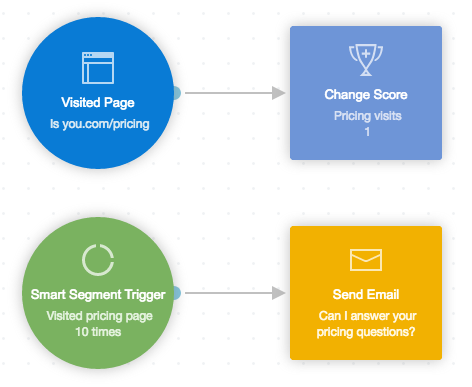
On the Smart Segment Trigger, select a smart segment based on your custom field being a specific amount, for example:

Ensure that the Smart Segment Trigger is configured to add contacts that enter the segment in the future:
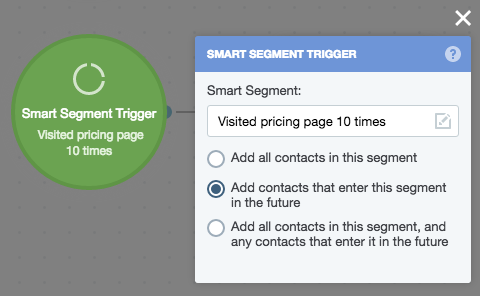
Note that in the above use case you could use the Field Match trigger instead of the Smart Segment Trigger.
